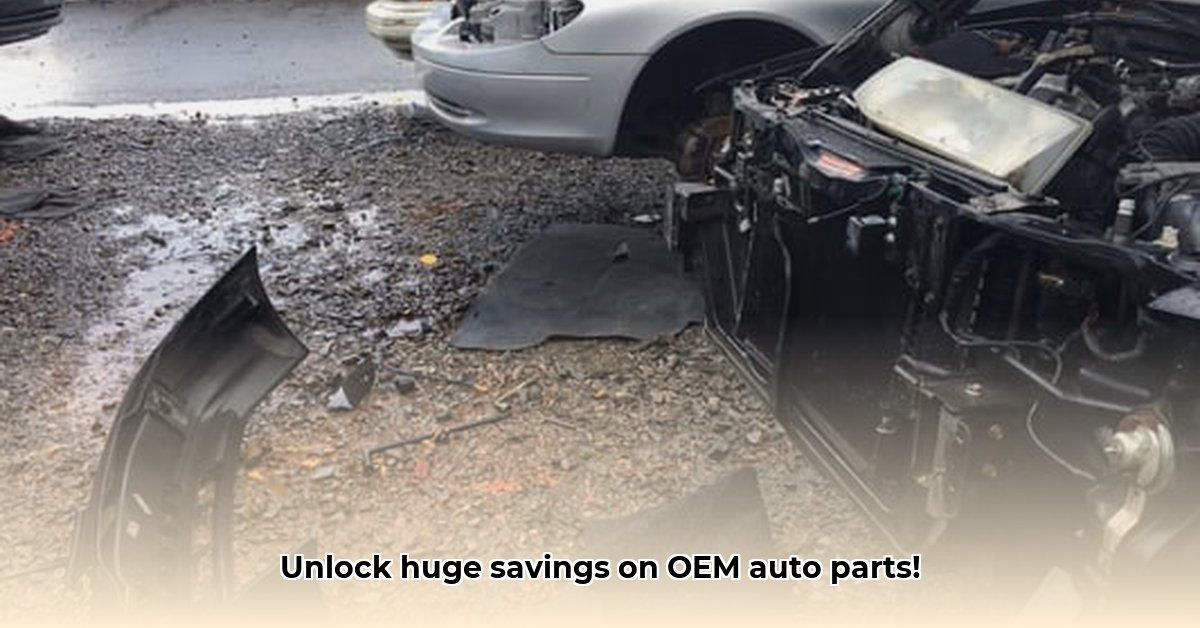
Pull-a-Part Lynnwood: Your Guide to Affordable OEM Auto Parts
Pull-a-Part in Lynnwood, Washington, offers a unique approach to sourcing affordable original equipment manufacturer (OEM) auto parts: a self-service junkyard. This model allows customers to directly locate and remove parts, significantly reducing costs compared to traditional auto parts stores or online retailers. This guide explores the Pull-a-Part Lynnwood business model, providing insights for both potential customers and those interested in the used auto parts market. For painting your salvaged car, check out this helpful guide on car paint quantities.
Understanding the Pull-a-Part Lynnwood Model: A Self-Service Approach
Pull-a-Part's core concept is simple: they provide a wide selection of vehicles; you locate and remove the parts you need. This streamlined process translates directly into lower prices for consumers. Their advertised "fresh cars daily" policy highlights a constantly rotating inventory, ensuring a diverse selection of makes, models, and years. However, this also necessitates effective search strategies. Have you ever wondered how they maintain this massive inventory?
Inventory Management: Maintaining a Rotating Selection
The "fresh cars daily" claim is central to Pull-a-Part's operational efficiency. Maintaining an extensive and regularly updated inventory is crucial to their success. While the specific techniques employed are proprietary, it's likely a combination of physical organization (potentially grouping vehicles by make, model, or year) and a sophisticated digital inventory management system. Effective organization is paramount; efficient part location directly translates into customer satisfaction and overall operational efficiency. How effectively do you think their system works to find parts quickly?
Pricing Strategy: Balancing Affordability and Profitability
Pull-a-Part's pricing is demonstrably competitive, significantly undercutting the prices of new parts. This strategy attracts a broad customer base, ranging from budget-conscious DIY mechanics to cost-conscious car owners. Their low pricing is likely a result of several factors: lower overhead due to the self-service model, high inventory turnover, and potentially favorable negotiation with vehicle suppliers. This delicate balance between affordability and profitability is key to their continued success. Is their price strategy sustainable in the long term, given market fluctuations?
Customer Service: Empowering Self-Reliance
Pull-a-Part's self-service model empowers customers to locate and remove parts independently. This naturally necessitates some mechanical aptitude and a willingness to get hands-on. While dedicated customer service representatives might not be readily available for constant assistance, it’s likely Pull-a-Part provides guidance through signage, part location diagrams, and staff available for basic inquiries. Preparation is key: knowing your vehicle's specifications and bringing the correct tools will streamline the entire process. How can Pull-a-Part enhance its self-service model to better support customers?
Supplemental Revenue: The Circular Economy Advantage
Beyond selling parts, Pull-a-Part benefits from its junk car removal service. This is a strategic move that serves several purposes: a continuous supply of vehicles, additional revenue streams, and a commitment to environmentally conscious practices. This circular economy model, where end-of-life vehicles are repurposed rather than scrapped, is likely a significant factor in their profitability and overall sustainability. How impactful is the circular economy model on their profitability?
Market Analysis: A Competitive Landscape
The used auto parts market is experiencing significant growth, driven by the increasing cost of new parts and a rising interest in sustainable practices. Pull-a-Part competes with both independent salvage yards and online retailers. E-commerce has intensified competition; however, Pull-a-Part offers a hands-on experience that online platforms cannot replicate. Their future success will likely depend on adapting to these trends, potentially by expanding their online presence and enhancing on-site part accessibility. What new strategies could Pull-a-Part implement to remain competitive?
SWOT Analysis: Identifying Strengths, Weaknesses, Opportunities, and Threats
| Strengths | Weaknesses | Opportunities | Threats |
|---|---|---|---|
| Low prices; OEM parts; High inventory turnover; Junk car removal revenue stream | Part identification challenges for customers; Self-service limitations; Dependence on high-volume car acquisition | Enhanced online presence; Improved part identification tools; Expansion into EV parts; Loyalty programs; Partnerships with local mechanics | Increased online competition; Fluctuating used car prices; Stricter environmental regulations; Economic downturns |
Recommendations for Pull-a-Part Lynnwood
Pull-a-Part could enhance its operations by:
- Improving Online Presence: Develop a user-friendly website with advanced search filters, high-quality images, and possibly virtual tours.
- Enhancing Part Identification: Implement interactive diagrams, clear labeling, and QR codes linking to part information.
- Loyalty Programs: Reward repeat customers with discounts and incentives.
- Advanced Inventory Management: Invest in a robust system that tracks parts and simplifies the search process.
- Expansion into EV Parts: Capitalize on the growing electric vehicle market.
Recommendations for Customers: Maximizing Your Pull-a-Part Visit
- Thorough Research: Identify the exact part needed using your VIN or part number.
- Prepare Your Tools: Bring necessary tools for efficient and safe part removal.
- Verify Compatibility: Double-check part numbers and ensure compatibility before purchase.
- Careful Inspection: Thoroughly inspect the part's condition for any damage.
- Utilize Online Resources: Leverage online forums and websites for part identification.
Conclusion: The Value Proposition of Pull-a-Part Lynnwood
Pull-a-Part Lynnwood provides a compelling value proposition: affordable OEM parts combined with a unique hands-on experience. By understanding their business model, customers can maximize their efficiency and savings. The junkyard's future success will depend on adapting to a dynamic market and continually enhancing customer experience. The self-service model, while demanding, offers a compelling alternative for cost-conscious car owners and DIY enthusiasts.